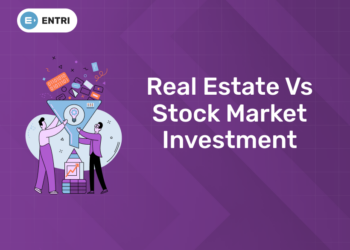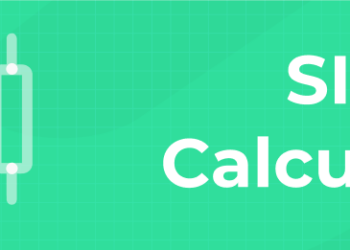Table of Contents
Passive income is unearned income that requires little work to earn or maintain. It frequently works in tandem with another source of income, like a side gig or a regular job.As an acquired income, passive income is subject to taxation. Rental income and business ventures in which the earner has no material involvement are two examples of passive income. The taxing authorities in certain jurisdictions, like the US Internal Revenue Service, separate passive income from other types of income, like wages from contract or regular work, and may apply different taxes to it.
Getting passive income can require a lot of work and accumulation over time. Because the beneficiary of passive income will receive payment regardless of whether they are materially involved in the activity generating the revenue, it can be a means to achieve early retirement and financial independence.
Not all forms of passive income are lump sum payments, such as inheritances or the money received from the sale of stocks or real estate. It may also originate from a source that, while unlikely, will remain consistent over time. Certain passive incomes can span generations, lasting for years or even centuries. These longer-term passive income sources can include real estate, debt, dividends, and other asset classes that appreciate in value.
Passive Income: Unlike Active Income
Earning money that doesn’t require constant personal effort is known as passive income.
- The important thing is that you need to put in very little daily work to generate income from these sources.
- One of the main benefits of passive income is financial freedom.
- Early financial independence and even retirement may result from this financial freedom.
- Dividends from stocks, royalties from books, and rental income from real estate are a few types of passive income.
- You can pursue personal interests without the stress of a regular job when you have passive income.
Money earned through labor is known as active income.
- It is a time-to-money exchange, and the amount of money it generates is directly related to your continuous work and efforts.
- Money earned through direct participation in work or services, such as salaries from jobs or earnings from self-employment, is referred to as active income, also known as earned income or ordinary income.
- Unearned income, on the other hand, is produced without the need for labor or services.
Passive Income: Overview
Rarely are passive income models as passive as many people believe. Writing the book you plan to sell, creating the curriculum for your online course, or selecting and buying a rental apartment are examples of significant upfront labor or financial commitments that are typically needed. The work involved in creating a passive income stream is frequently done for free in the hopes that it will eventually pay off in the form of months or years.Managing your content, services, or goods is another task. In order to make sure that your offering reaches a target audience, you might also need to market it. You may begin to question the term “passive” when you consider other forms of business administration and continuous maintenance tasks.
High-income groups typically have more diverse revenue streams, which increases their likelihood of having access to hidden income.As a result, passive income can also serve as a catalyst for tax evasion by shifting active income into the passive category.As a result of the loophole, there has been a significant amount of earned income, such as income from irregular labor compensation, and passive income, such as income from leasing and selling real estate, which has not been fully taxed. The public has expressed concerns that personal taxation has been reduced to a wage tax that targets the middle-class working class, who are often exploited.
Passive Income: 7 Best Ways
Earnings from sources that need little active participation or effort to create and sustain are referred to as passive income. Passive income streams generate income even when you’re not working actively, in contrast to traditional forms of income that frequently require exchanging time for money. Since passive income has the potential to provide ongoing income with less dependence on traditional employment, it is frequently linked to wealth-building and financial independence concepts. These are the top seven methods for earning passive income
Dividend-Paying Stocks
Dividends are a way for companies to reward shareholders and maintain investor trust. They can signal a company’s stability and profitability, though some companies may opt to reinvest profits instead.Funds, like mutual funds or ETFs, may pay dividends based on their holdings’ performance. Dividend payments from funds differ from those of individual companies.Economists argue that a company’s dividend policy may not affect its stock price or cost of capital significantly. However, dividends remain an attractive investment incentive for shareholders.
- A dividend is the distribution of a company’s earnings to its shareholders, determined by the company’s board of directors.
- Typically distributed quarterly, dividends can be in cash or reinvested in additional stock.
- Investors seeking dividend income have various options, including individual stocks, mutual funds, and ETFs. Techniques like the dividend discount model and dividend yield factor can aid in stock selection.
- Dividends must be approved by shareholders and can be issued as cash or shares of stock.
- They represent a reward for shareholders’ investment in a company’s equity.Larger, established companies with predictable profits often pay dividends.
- Sectors such as basic materials, oil and gas, banks, healthcare, utilities, and master limited partnerships (MLPs) regularly distribute dividends.
- Dividend payments follow a set order of events, including the announcement date, ex-dividend date, record date, and payment date.
- These dates determine shareholder eligibility for receiving dividends.The declaration of dividends can impact a stock’s share price.
- On the ex-dividend date, the share price may adjust downward by the dividend amount to account for shareholders not eligible to receive the dividend.
Rental Real Estate Properties
Residential rental property refers to real estate properties purchased by investors specifically for the purpose of renting them out to tenants. These properties are intended for living or dwelling purposes and may include various types of housing such as single-family homes, condominium units, apartments, townhouses, and duplexes.
- There are various reasons why residential rental properties appeal to investors.
- Monthly Cash Flow is when the tenant rental income generates a consistent flow of cash.
- Long-Term Appreciation is where the residential properties have a tendency to increase in value over time, creating opportunities for capital gains.
- Tax Benefits the owners of residential rental properties are eligible for a number of tax breaks and benefits, such as depreciation deductions and deductions for costs associated with upkeep and management of the property.
- Investment in residential rental property has risks despite its advantages:
- Illiquidity in Real estate is less liquid than stocks or other financial assets because it is more difficult to convert to cash.
- Property owners are in charge of managing the property, which includes finding tenants, collecting rent, maintaining the space, and resolving tenant complaints.
Creating and Selling Digital Products
Digital products are downloadable files sold online, ranging from ebooks and online courses to templates and artwork.Low-effort and low-cost production: Digital products only need to be created once and can be sold repeatedly without the need for inventory replenishment.Customers download digital products directly, eliminating the need for shipping and associated hassles.
- t’s easy to scale a digital product business, and online platforms offer virtually infinite storage and selling capabilities.
- Digital products can be sold worldwide without the constraints of physical locations or shipping restrictions.
- Through E-books share expertise or insights on various topics.
- Templates can offer pre-designed documents or tools to simplify tasks.
- Online Courses are their to provide educational content in various formats, catering to different learning preferences.
- Maintain consistent product quality and marketing efforts.
- Stay updated on market trends and customer preferences.
- Embrace a growth mindset and adaptability to evolving market conditions.
Peer-to-Peer Lending
Peer-to-peer (P2P) lending circumvents traditional financial institutions like banks by connecting borrowers and individual investors directly through online platforms.
- It describes how to get started with peer-to-peer lending, including how to investigate platforms, set up and fund accounts, choose which loans to invest in, and keep track of your investments.
- It also offers advice on how to get the most out of P2P lending, including how to diversify your investments, pick reputable platforms, evaluate the creditworthiness of borrowers, concentrate on high-interest loans, think about auto-investing, and keep an eye on your investments on a regular basis.
- It delves into the forthcoming developments concerning P2P lending, encompassing regulatory shifts, market concentration, amalgamation with conventional banking amenities, penetration into novel markets, and amplified employment of blockchain technology to ensure transparency and security.
- In order to succeed in P2P lending, it emphasizes the significance of research, diversification, risk management, and ongoing monitoring in its conclusion.
Starting a Blog or YouTube Channel
The decision to launch a blog or a YouTube channel is influenced by a number of variables, including comfort level, aptitude, equipment accessibility, target audience, and revenue objectives. It is advised to launch both platforms simultaneously for maximum exposure and income potential.Writing blog posts usually takes less time than creating videos.Videos are less editable after they are published, but blogs make it easier to update older posts.You can optimize visibility and revenue opportunities by simultaneously launching a blog and a YouTube channel.
- Comfort on Camera: Although it might seem strange at first, getting started on YouTube gradually becomes less difficult.
- But if you find it difficult to be on camera, a blog might be a better option.
- Different skills are needed for each platform: for blogging, writing and basic photography; for YouTube, video recording and editing.
- A blog can be accessed with just a laptop and an internet connection, but YouTube requires additional gear, such as a high-quality camera and microphone.
- While YouTube membership is free, blogging requires paying for hosting and domain names; however, purchasing high-quality gear is advised.
- Your choice can be influenced by knowing where your target audience prefers to consume content—whether it be through watching videos or reading blog posts.
- Knowing your niche’s competitors will help you identify areas in which you can differentiate yourself.
- Both platforms offer various ways to monetize content, such as ads, affiliate marketing, sponsored posts, and selling products/services.
- While income from blogging may come from higher ad rates, YouTube offers opportunities for diverse revenue streams.
- Video content can build trust more quickly than written content, as viewers feel a personal connection with YouTubers.
High-Yield Savings Accounts and Certificates of Deposit
Reputable financial institutions usually offer high-yield savings accounts and certificates of deposit (CDs), which are frequently covered by the Federal Deposit Insurance Corporation (FDIC) in the US. Up to a certain amount, this insurance offers some protection for your money that you have deposited. CDs and high-yield savings accounts have higher interest rates than standard savings accounts. These rates are typically more competitive than those of standard savings accounts, so even though they might not be very high, your money will grow more quickly over time.
- High-yield savings accounts and CDs offer higher interest rates compared to standard savings accounts, providing a steady and predictable income.
- CDs offer fixed interest rates for specific terms, guaranteeing a known return on investment.
- Both options are straightforward, with clear terms and conditions.
- CDs come with different term lengths, allowing you to choose one that aligns with your financial goals.
- There’s no exposure to market volatility, making these investments stable.
- Many high-yield savings accounts offer compound interest, allowing your earnings to grow over time.
- High-yield savings accounts are generally more accessible than CDs, offering the flexibility to withdraw funds if needed.
Stock Trading
Stock trading is a dynamic field that requires continuous learning and adaptation to changing market conditions. Stay updated on market trends, economic indicators, and investment strategies to improve your trading skills over time.Stock quotes provide essential information about a company’s stock, including its current price, trading volume, bid and ask prices, and other relevant data. By analyzing stock quotes regularly, beginners can gain insights into market trends, investor sentiment, and potential trading opportunities. A Demat account, short for dematerialized account, is essential for trading stocks in electronic form. It serves as a digital repository for holding securities such as stocks, bonds, and mutual funds.
- In stock trading, buyers submit bids indicating the maximum price they’re willing to pay for a stock, while sellers submit asks indicating the minimum price they’re willing to accept.
- To open a Demat account, you’ll need to choose a reputable brokerage firm, provide necessary documents such as identity proof, address proof, and PAN card, and complete the account opening process.
- Understanding bid and ask prices is crucial for executing profitable trades.
- It’s essential to study both fundamental and technical analysis of stocks.
- Fundamental analysis involves evaluating a company’s financial health, including its earnings, expenses, assets, and liabilities.
- Technical analysis, on the other hand, involves analyzing stock price and volume charts to identify patterns and trends.
- Volatility is inherent in the stock market, and losses can occur unexpectedly.
- Implementing a stop-loss strategy helps minimize potential losses by automatically selling a stock if its price drops to a predetermined level.
- While no one can predict stock prices with certainty, seeking advice from experienced traders or financial advisors can provide valuable insights and guidance, especially for beginners.
- To build confidence and minimize risk, consider starting with less volatile stocks.
- These stocks may offer slower growth but are generally more stable, providing a safer entry point for novice traders.
Passive Income: Conclusion
In conclusion, investing in high-yield savings accounts or certificates of deposit (CDs) can offer several benefits for those seeking passive income. These options provide a reliable and predictable stream of income, with fixed interest rates that ensure stability over a specified period. Additionally, they are low-risk investments, typically insured by the FDIC, providing safety and security for investors’ funds. Furthermore, high-yield savings accounts and CDs are easy to understand and accessible, making them suitable for individuals looking for straightforward investment options.
While these investments may not offer the high returns of riskier assets like stocks, they provide a stable foundation for building passive income and can serve as a valuable component of a diversified investment portfolio. Ultimately, the decision to invest in high-yield savings accounts or CDs should align with an individual’s financial goals, risk tolerance, and liquidity needs. They also offer the advantage of compound interest, allowing investors to earn interest on their interest over time, thereby boosting their earnings.
A Note by Entri
The Entri App offers a comprehensive Stock Market Course designed to cater to individuals at all levels, from beginners to experts. Here’s why you should consider joining: Premium Community Membership means gaining access to an exclusive community where you can interact with seasoned traders and fellow learners.
- Participate in live sessions conducted by experts to gain practical insights and stay updated with market trends.
- Receive guidance and support for your trading activities, helping you apply theoretical knowledge to real-world scenarios.
- Engage in post-market analysis sessions to evaluate your trades and learn from both successes and failures.
- Benefit from live mentorship from experienced traders who can provide personalized guidance tailored to your learning needs.
- Upon completion of the course, receive a certification that validates your skills and knowledge in stock trading.
- The course covers a wide range of topics, including options, intraday, swing, positional, and forex trading, ensuring you gain expertise in various trading strategies.
Learn trading from experts! Join today to learn the fundamentals of trading!
Passive Income: FAQ’s
What is passive income?
Passive income is earnings derived from a source that requires little to no effort or time to maintain. It’s money generated on a regular basis with minimal involvement after the initial setup.
How is passive income different from active income?
Active income is earned through active work or effort, such as a salary from a job or fees from providing services. Passive income, on the other hand, is earned from investments or ventures that generate income without active involvement.
What are some common sources of passive income?
Common sources of passive income include rental properties, dividends from stocks, interest from savings accounts or bonds, royalties from intellectual property, and income from affiliate marketing or online businesses.
Is passive income truly “passive”?
While passive income requires less active effort than traditional forms of income, it often requires upfront investment of time, money, or both. Additionally, some passive income streams may require occasional monitoring or management.
How much passive income can one expect to earn?
The amount of passive income one can earn varies greatly depending on the source of income, the amount of initial investment, market conditions, and other factors. Some passive income streams may generate only a small amount of income, while others can provide substantial returns.
What are the benefits of earning passive income?
Passive income offers financial freedom, flexibility, and the potential for wealth accumulation without being tied to a traditional 9-to-5 job. It can also provide a source of income during retirement or periods of unemployment.
Are there any risks associated with passive income?
Like any investment or business venture, passive income comes with its own set of risks. These may include market fluctuations, economic downturns, changes in regulations, or unexpected expenses.
How can I start earning passive income?
To start earning passive income, consider investing in income-generating assets such as rental properties, dividend-paying stocks, or bonds. You can also explore online business opportunities, affiliate marketing, or creating and selling digital products.
Do I need a lot of money to start earning passive income?
Not necessarily. While some passive income streams may require a significant upfront investment, there are also low-cost or no-cost options available, such as starting a blog or creating content on social media platforms.
How long does it take to start earning passive income?
The timeline for earning passive income varies depending on the chosen source of income, the amount of initial effort and investment required, and other factors. Some passive income streams may start generating income relatively quickly, while others may take longer to build up.
Can passive income replace my full-time job?
It’s possible for passive income to replace or supplement your full-time job, but it often requires time, dedication, and careful planning. Many people start by building passive income streams alongside their regular job and gradually transition to relying solely on passive income.
Are there any tax implications associated with passive income?
Yes, passive income is typically subject to taxation. The tax treatment of passive income varies depending on the source of income, your tax filing status, and other factors. It’s important to consult with a tax advisor or accountant to understand your specific tax obligations.
Is passive income suitable for everyone?
Passive income can be a valuable addition to anyone’s financial strategy, but it may not be suitable for everyone. It requires patience, discipline, and a willingness to take calculated risks. Additionally, passive income strategies should be tailored to individual financial goals, risk tolerance, and circumstances.










